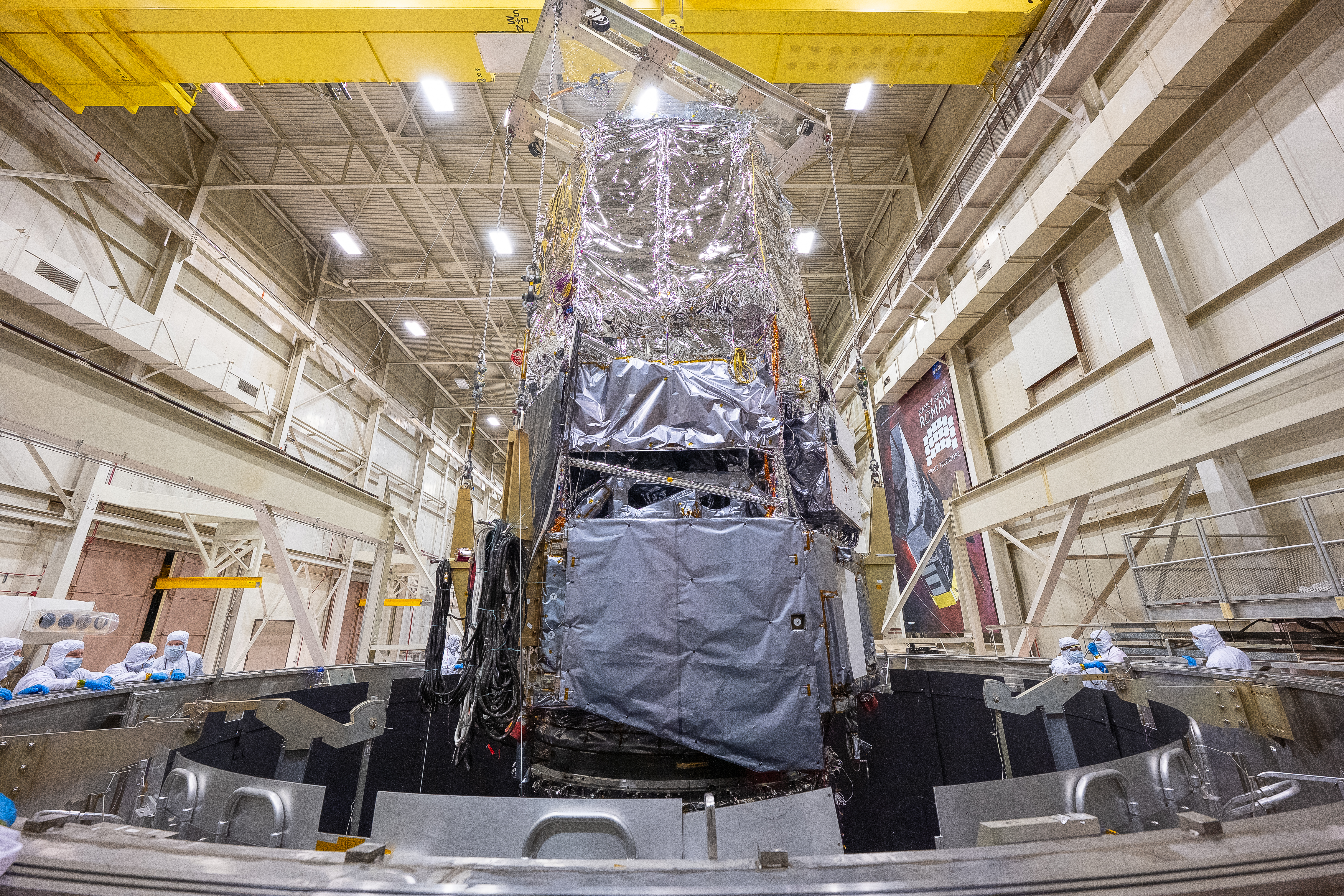UPDATE Feb. 11, 2025: The second rocket of the GIRAFF mission launched on Saturday, Feb. 8, at 11:35 p.m. Alaska Standard Time, through pulsating aurora over Venetie, Alaska. The principal investigator reported that all of the instruments looked healthy. The Black and Diffuse Aurora Science Surveyor rocket mission did not observe suitable science conditions (black aurora) while launch conditions were favorable, so it remained grounded through the end of the launch window. The team is reviewing future opportunities to launch.
UPDATE Feb. 3, 2025: The first rocket of the GIRAFF mission launched on Saturday, Feb. 1, at 10:07 p.m. Alaska Standard Time, through pulsating aurora spotted over Venetie, Alaska. Principal investigator Robert Michell reports that all instruments performed as expected and the team is reviewing the data. The second GIRAFF rocket and the Black and Diffuse Aurora Science Surveyor rocket mission (led by principal investigator Marilia Samara) have yet to launch. The launch window remains open through Feb. 10.
Two NASA rocket missions are taking to the Alaskan skies in hopes of discovering why some auroras flicker, others pulsate, and still others are riddled with holes. Understanding these peculiar features is part of NASA's goal to understand the space environment around our planet, which can affect both spacecraft and astronauts. The launch window for the missions — which will fly out of the Poker Flat Research Range in Fairbanks, Alaska — opens on Jan. 21, 2025.
Witnessing the aurora borealis, or northern lights, can be a moving experience. As ribbons of color fill the night sky, Earth’s ever-present connection to space is made visually manifest. It can quiet the mind. Yet these serenity-inducing shimmers are sustained by countless tiny collisions, cascades of little crashes, each perpetrated by a wayward electron. They leave gases glowing in their aftermath like smoldering wreckage. For those less romantically inclined, aurora-watching might be considered top-notch rubbernecking.
This metaphor for the aurora is slightly dramatic. But it does highlight the question that Marilia Samara and Robert Michell, both space physicists at NASA’s Goddard Space Flight Center in Greenbelt, Maryland, are after: What sends these electrons careening off course? Like crime scene investigators, Samara and Michell will use clues at the crash site and work backward to investigate the cause. As principal investigators of the two soon-to-launch rocket missions, they plan to fly rockets through active auroras to reveal what sent them on their distructive courses.
The GIRAFF (Ground Imaging to Rocket investigation of Auroral Fast Features) mission comprises two rockets, each carrying the same set of instruments. Each rocket will target a distinct subtype of aurora: one for so-called fast-pulsating auroras, which flash on and off a few times a second, and the other for flickering auroras, which do so up to 15 times a second.
“It looks like the flickering of an old TV,” Michell, who leads the GIRAFF mission, said.
Michell suspects that fast-pulsating versus flickering auroras are fueled by different electron acceleration processes. To find out, his team will launch one rocket into each type of aurora, measuring the energy, quantity, and relative arrival times of the electron populations forming them. The measurements, he hopes, may reveal which acceleration processes are at work and constrain where in near-Earth space they are occurring.
The second rocket mission, led by Samara, will study so-called “black auroras,” where light from an aurora appears to be missing. In the last 25 years, research using the ESA (European Space Agency) and NASA Cluster satellites has hinted that these dark spots may form where the normally incoming stream of electrons reverses direction, escaping back out into space. Of course, not every blank spot in the aurora fits this description. You need to detect outgoing electrons to know it’s the real deal.
“Otherwise that’s not black aurora, it is just the lack of aurora,” said Samara.

Samara’s team will launch their rocket through the black aurora and surrounding regions, surveying the electron populations as they fly through to understand how and why this stream reversal takes place. The mission is called the Black and Diffuse Aurora Science Surveyor. (Its acronym will be left as an exercise to the reader.)
‘The Hardest Part is Still Ahead’
Even in Alaska, where auroras shine most winter nights, flying a rocket through them is no small feat. Above terrestrial winds, the aurora move according to their own principles. To know when to launch, both teams will track the auroras via ground-based cameras at the launch site and at the down-range observatory in Venetie, Alaska, about 130 miles to the northeast along the rockets’ trajectory.
“We'll be watching these structures moving in the all-sky camera, trying to time it just right,” Michell said.
Since it takes about five minutes to get the rockets to altitude, the teams must aim them not where the auroras are but where they think they will be. Of the many tools at their disposal, experience is the truest guide.
“You do the best you can, but there's a certain mix of intuition and determination you need,” Samara said.
NASA’s Goddard Space Flight Center, Greenbelt, Md.




































